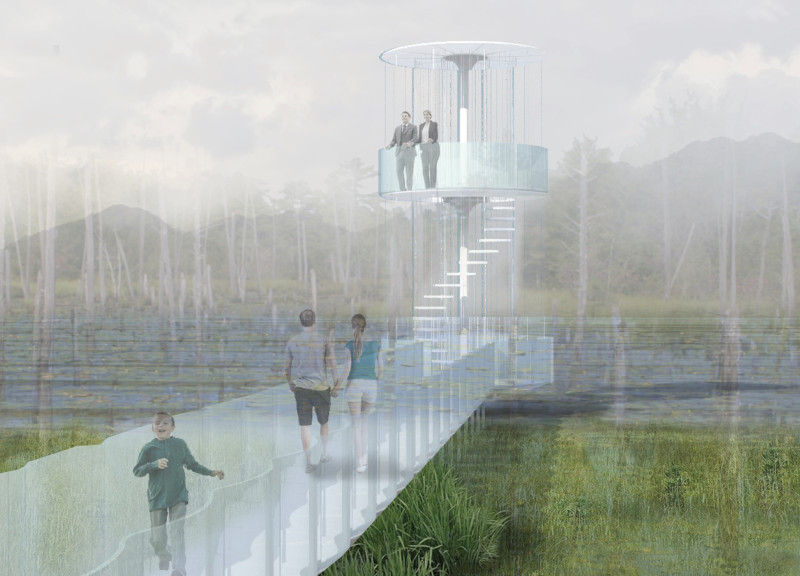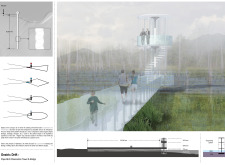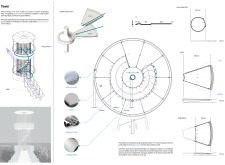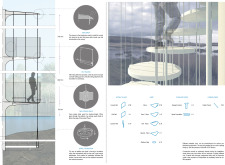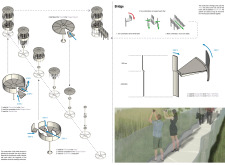5 key facts about this project
### Overview
The design for a bird observation tower and bridge, named "Oneiric Drift," is strategically situated within a wetland ecosystem, intended to provide an immersive experience for visitors. The project emphasizes minimal intrusion into the natural environment by employing a light and transparent structure that enhances visitor engagement without disrupting the surrounding habitat. The design is characterized by a circular geometry, promoting unobstructed views and efficient spatial organization within the tower.
### Structural and Spatial Strategy
The observation tower and bridge feature a circular base, optimizing observation points and facilitating user flow throughout the structure. The integration of a series of interconnected platforms, linked by a spiral staircase, enhances navigational experiences as users ascend and descend. This tiered approach allows for multiple viewing heights, offering diverse perspectives of the wetland environment and encouraging active engagement with the natural landscape.
### Materials and Sustainability
The project prioritizes sustainability by minimizing environmental impact and avoiding significant alterations to the wetland ecosystem. A suspension system is used to ensure structural integrity while maintaining a floating effect above the water. Key materials include acrylic glass for the main viewing platforms, providing clarity and resistance; high-density polyethylene (HDPE) for durability in structural components; stainless steel for strength and corrosion resistance; and carbon fiber for lightweight design elements. This selection of materials not only supports functionality but also enhances the aesthetic quality of the structure.
The construction methodology involves prefabricated components to simplify assembly and reduce on-site impacts. Installation is executed from the top down to optimize load distribution, and interlocking elements in the bridge reinforce structural stability, further contributing to the design's lightweight appearance.


